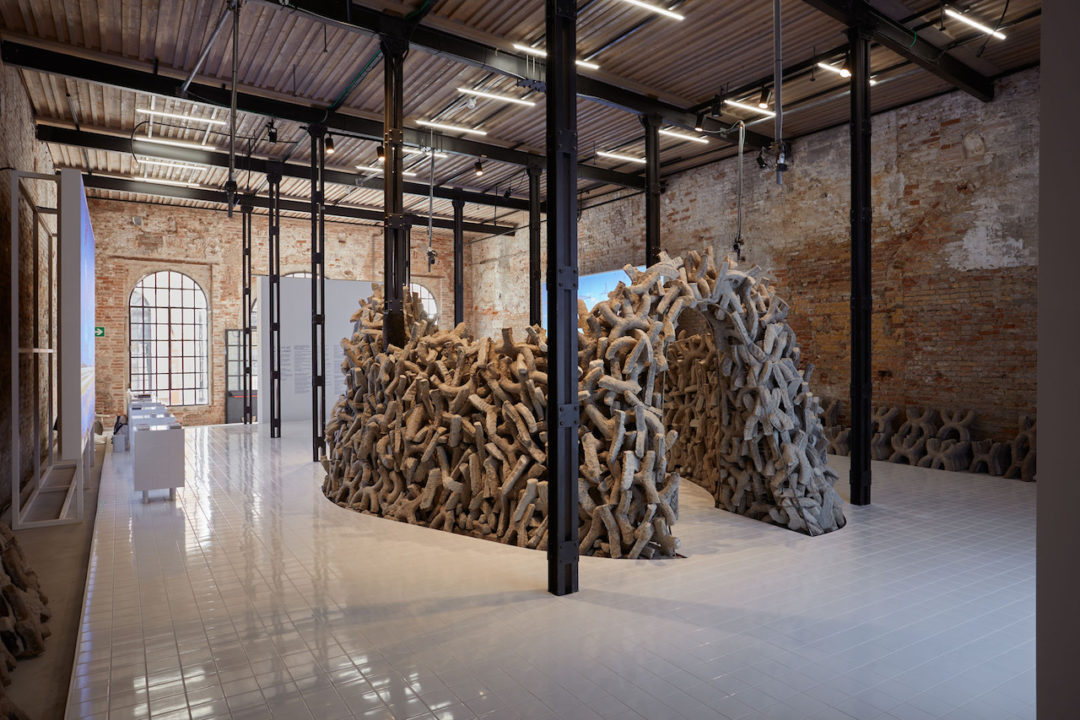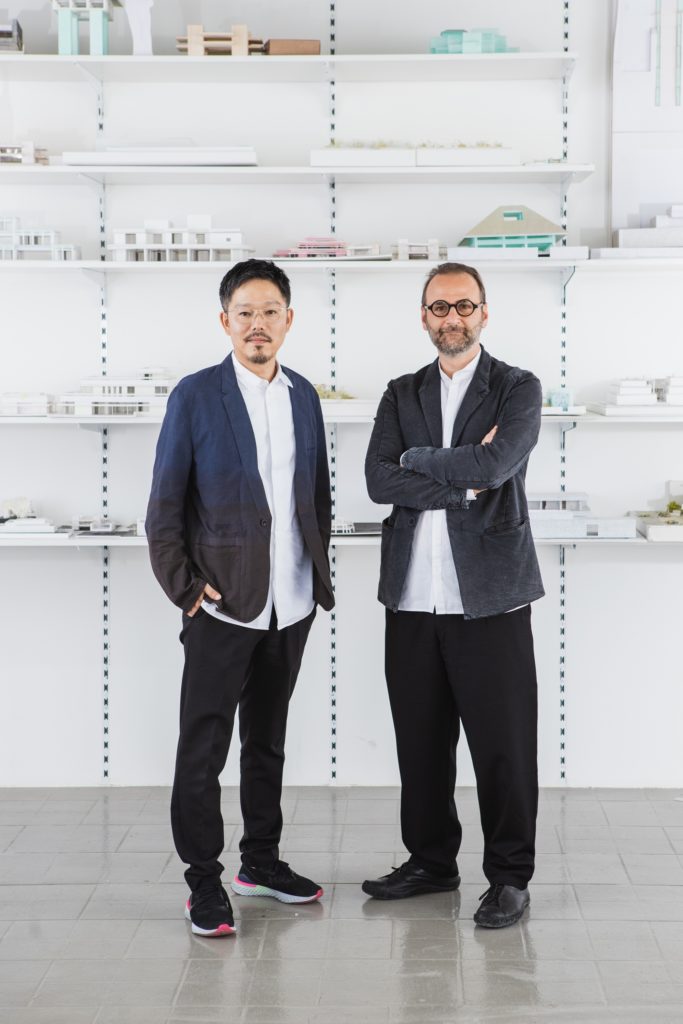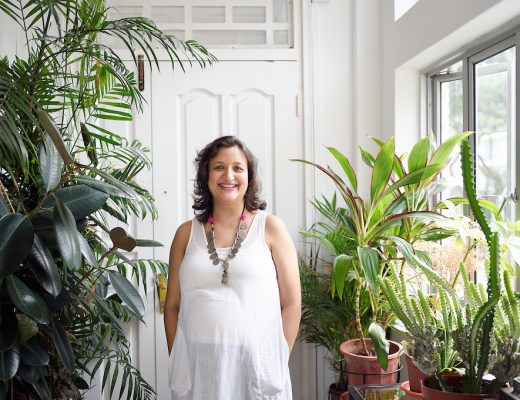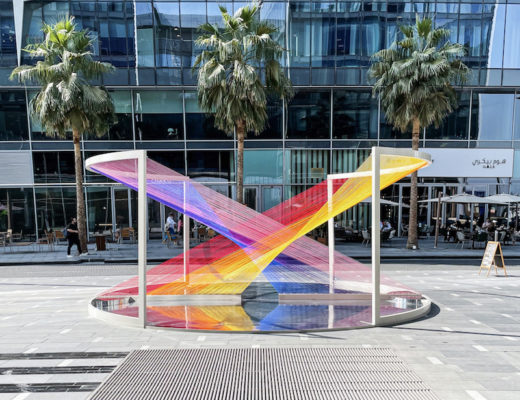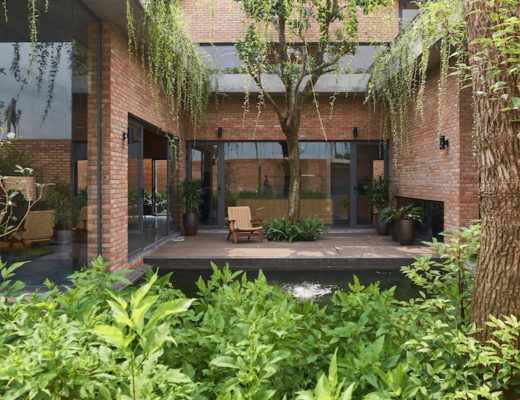Titled Wetland, the UAE Pavilion presents an experimental solution to the critical environmental impact of the construction industry. Curated by Wael Al Awar and Kenichi Teramoto, co-founders of Dubai-based practice Waiwai design, the concept presents a large-scale prototype structure created from an innovative, environmentally friendly cement made of recycled industrial waste brine, accompanied by photography works of Farah Al Qasimi. Exploring “sea salt as a traditional, locally-sourced building material, and its potential uses for developing sustainable habitation in desert environments like the UAE”, the prototype is 2.7m tall and 7m x 5m wide on its exterior, creating a walkable interior space.
Top photo: Frederico Tora for Plane Site
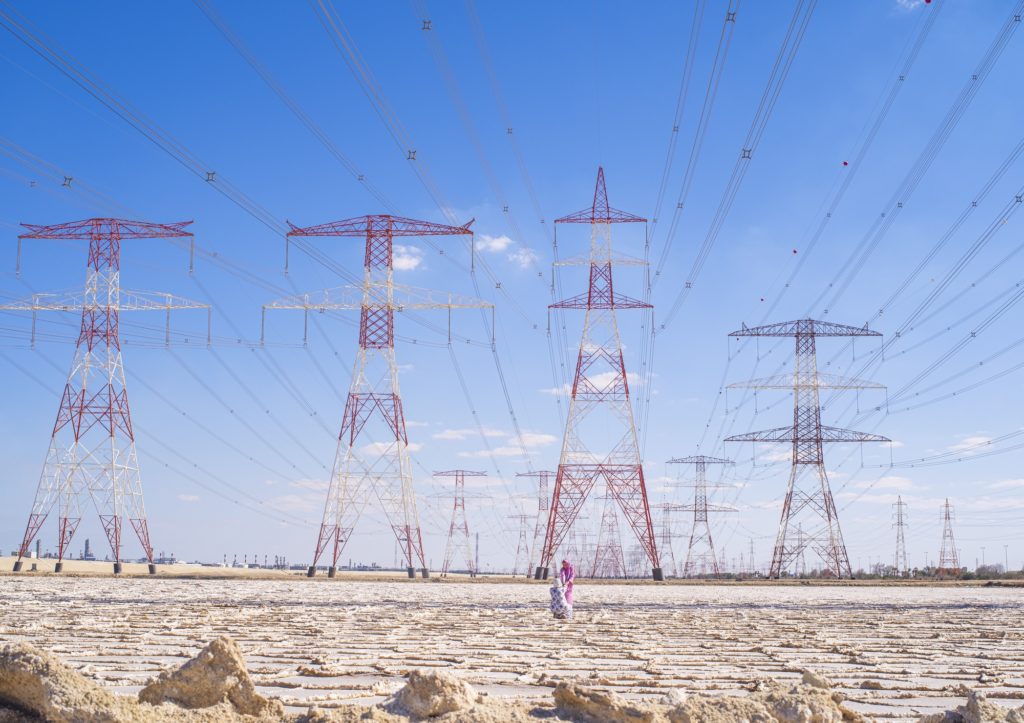
Formed from up to 3,000 modules, the exhibit is made of an MgO-based cement designed by the curators, in collaboration with NYU Abu Dhabi’s Amber Lab, the American University of Sharjah’s Department of Biology, Chemistry and Environmental Sciences, and the University of Tokyo’s Obuchi Lab and Sato Lab.The crystallization of salt in the sabkhas offers a blueprint for an alternative to Portland cement, the production of which accounts for 8% of global carbon dioxide emissions. Together with a group of scientists in Tokyo, Abu Dhabi, and Sharjah, we have been working on reproducing the crystallization process of the Sabkha ecosystem. The results of our ongoing quest for a renewable building material is presented at the pavilion.
“Throughout our collaborative research process to develop a building material without the critical environmental impact of Portland cement, we’ve maintained a focus on a localised architectural practice deeply intertwined with the resources and environment of the Gulf. Our MgO cement is made from brine leftover during industrial desalination, a resource that the UAE has in abundance. It has the strength and durability to be used in modern architecture in standard brick shapes, but for this exhibition, we have been inspired by the UAE’s traditional vernacular architecture of coral houses, to hand-cast modules in organic, coral-inspired shapes. In this way, we are reimagining modern architectural processes and retaining a strong, poetic sense of the region’s identity and culture within the structure.”
Wael Al Awar and Kenichi Teramoto, co-founders, Waiwai Studio and curators of the UAE Pavilion
You might also like:

